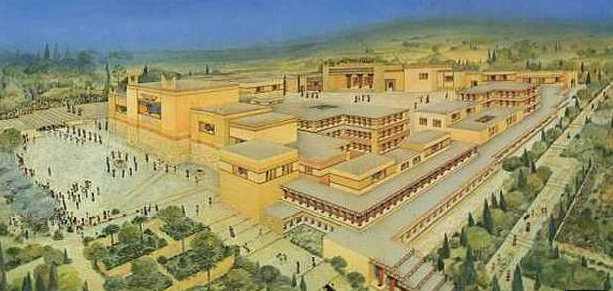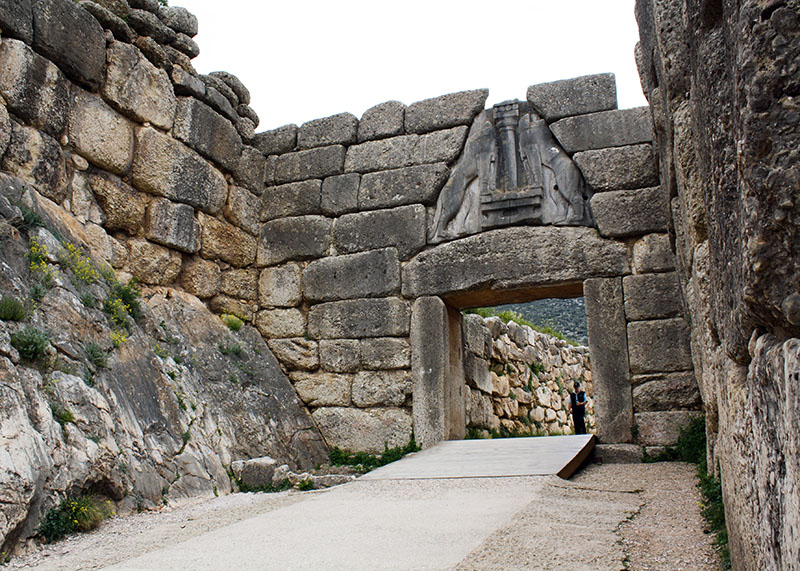Regions of Balkan and Asia Minor that mourn the Aegean Sea and the Aegean islands of Crete were natural geographical entity – Egeida, Aegean country. By the end of the 4th Century BC. the most part of Egeides civilization rose out from the Neolithic backwardness under the impact from civilized front facing East.
In 1870, German merchant Heinrich Schliemann discovered ruins of Troy in Hisarlık, thereby began the study of the Trojan culture, which was an offshoot of the Aegean. Schliemann began to excavate the Peloponnese walls of Mycenae and thus began the research of another branch of the Aegean culture – Hellas culture. Arthur Evans began excavations in 1900 in Crete, in the area of the old city of Knossos.



Crete – Crete was the fifth largest Mediterranean island and it had specially intended nature for agriculturists, farmers and sailors. It was placed between three continents, with a small distance from all the three. English archaeologist Arthur Evans started in 1900 to excavate the monuments of the city of Knossos, that had been in 1878 found by the Greek Minos Kalokairines.
Old Minoan Crete – on the small island Mochlos were discovered tombs with rich gold jewelery and precious stone vases.
Protopalatial Age – during the third century B.C. transition from tribal to class society was completed and led to the development of agriculture, trade, seafaring and trade. The epoch of the first great palace includes The Great Knossos Palace, oval structure in Vasiliki. The most typical craft products of that era were Kamares vases, named after a cave on Mount Ida, where they found the first-largest and most distinctive examples.
Neopalatial Age – the mid18th century BC a powerful earthquake destroyed the palacees in Crete, which were restored a few decades later to form even more spectacular structures. The largest were built at Knossos, Phaistos, and Hagia Triada. The principal monument of this period was the palace of Knossos, that consisted of various buildings. In the mid 15th century B.C. Cr. Minioan, the masters of Knossos dominated Crete and had a supremacy at the sea.
The frescoes in the palaces were one of the most valuable monuments of applied arts in Crete. The best art works from the Minoan religion and cult have been preserved in a stone sarcophagus from Hagia Triada.



Mycenaean culture (time of heroes) – walls of the Mycenaean acropolis were excavated by the Schliemann and they are called cyclopean after Pausanias because they were built from a huge stone blocks. An integral part of these walls were the monumental Lion’s Gate composed of four monoliths, above which was a triangular plate with a relief (two lionesses rearing the pillar).
The oldest reliefs in Greek art have been discovered over the cave tombs in Mycenaean gardens.
In the second half of the 16th and into the 15th century B.C. Cr. the Central Mycenaean culture has been developed, characterized by a tombs of Tholos and burial chambers. Two Tholos were especially important – Agamemnon’s grave and Treasury of Atreus. The path to the Treasury of Atreus was led by a hallway (dromos), flanked by two large walls. A path through a monumental gate led into a round room with a dome. From the hall that served the cult of the deceased you could enter sideways into a small crypt where the deceased were burried. Dromos, round hall under the dome and the crypt were the basic parts of the Tholos tombs, built from the 15th to the 13th century B.C. Cr.
Other important centers of the Mycenaean civilization were Argos, Pylos (traditional home of Nestor ), Athens, Orchomenos, Tiryns.
